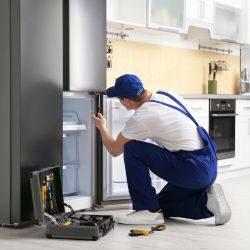
Maximizing Oven Lifespan: Preventing Heating Element Malfunctions
Why Oven Elements Break
Is your kitchen experiencing oven problems? If your culinary creations are emerging undercooked or your oven isn’t heating at all, the culprit may be a faulty heating element. Don’t let this common appliance issue disrupt your cooking routine. Understanding the causes of Why Oven Elements Break can ease frustration.
understanding the heating element
Whether your oven is electric or gas, the heating element is the heart of its operation. These metal coils or ribbons convert electrical energy into heat, ensuring your meals are cooked to perfection. However, the Durban climate and daily wear and tear can take its toll on this important component.
why do heating elements fail?
- Humidity and Corrosion: The humidity in Durban can corrode heating elements over time, leading to premature failure.
- Load Shedding: The frequent power fluctuations associated with load shedding can stress heating elements and shorten their lifespan.
- Accidental Damage: Spills, splatters, and rough handling can damage the delicate components of a heating element.
- General Wear and Tear: Even with proper care, heating elements have a finite lifespan and will eventually wear out.
consequences
A malfunctioning heating element can have a significant impact on your kitchen experience:
- Uneven Cooking: This can lead to undercooked or burnt food, potentially ruining your meals and creating food safety concerns. Call us for help with your oven elements
- Inaccurate Temperatures: If your oven cannot maintain consistent temperatures, your recipes may not turn out as expected.
- Complete Oven Failure: In severe cases, a broken heating element can render your oven unusable.
Preventing and Addressing Heating Element Issues
- Regular Maintenance: Keep your oven clean and free of debris, and avoid using abrasive cleaning materials that can damage the heating element.
- Careful Handling: Prevent accidental damage by avoiding banging pots and pans against the element.
- Professional Inspection: If you notice signs of electrical issues, such as flickering lights or a burning smell, contact a qualified electrician to inspect your oven’s wiring.
troubleshooting
- Visual Inspection: Look for visible signs of damage, such as cracks, warping, or burn marks on the heating element.
- Professional Diagnosis: If you suspect a problem, it’s best to consult a professional appliance repair service. They can diagnose the issue accurately and safely replace a faulty heating element.
contact us
If you’re experiencing oven problems in Durban, trust the experts at
Smart Appliance Centre CC
14 Blackburn Road , parkhill, Durban North, 4051
031 562 0666
We specialize in diagnosing and repairing a wide range of oven issues, including heating element malfunctions.
Get in touch with us today - Why Oven Elements Break
Your Oven Heating Element: Everything You Need to Know
what causes oven heating element to break?
there are a few reasons Why Oven Elements Break
- Wear and Tear: These elements endure a lot of heat cycling (heating up and cooling down). After some time , the metal can fatigue and break.
- Accidental Damage: Did you recently clean the oven? A harsh scrubbing or a bump with a pan can sometimes damage the delicate coil.
- Electrical Issues: A power surge or a faulty connection within the oven can also cause the element to burn out.
How can I tell if my heating element is broken?
- No Heat: The most obvious sign is that your oven isn’t heating up at all.
- Visible Damage: Check for breaks or blisters in the element’s coil.
- Uneven Cooking: If food is cooking unevenly, or only the top or bottom is getting done, a broken element could be the culprit.
can i replace an oven element myself?
in most cases, yes! It’s a relatively straightforward repair. You’ll need to:
- Turn off the power to the oven.
- Locate the broken element (usually on the top or bottom of the oven cavity).
- Remove the screws or clips holding it in place.
- Disconnect the wires and replace them on the new element.
